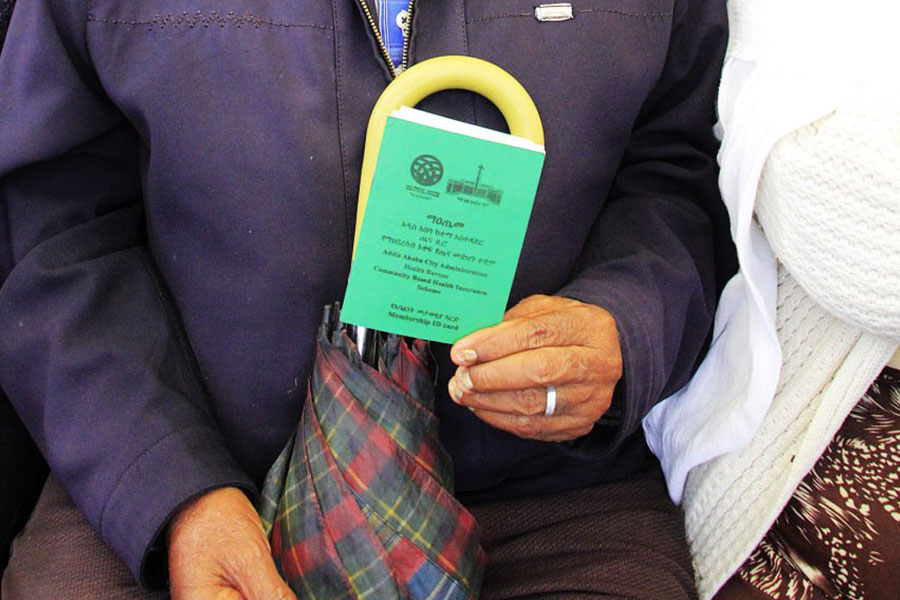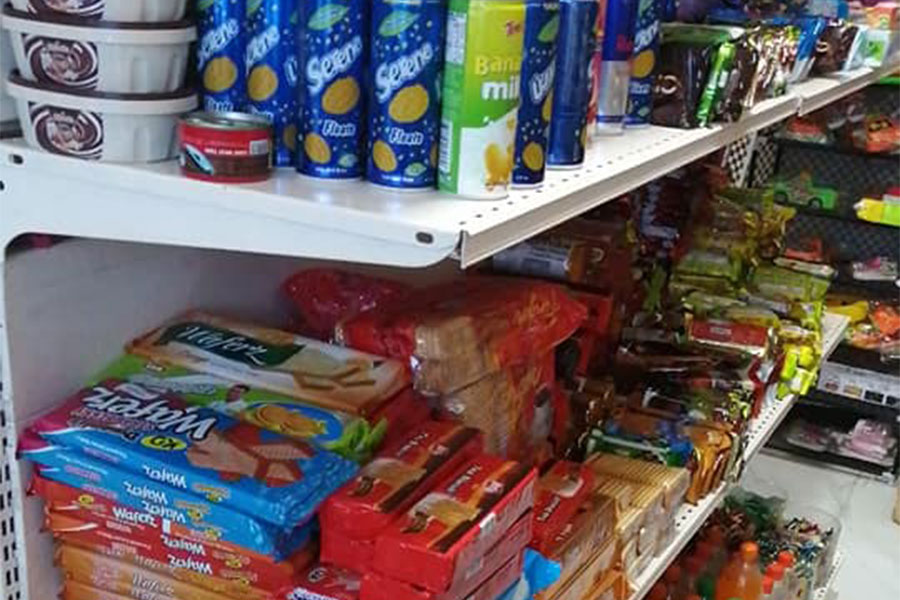
Viewpoints | Jun 21,2025
Jun 29 , 2019
By Mesfin Namarra
The government should stop playing hide and seek games with parallel market operators and consider liberalisation measures like allowing private forex shops, argues Mesfin Namarra, a managment consultant and former member of parliament. He can be reached at mesfin.namarra@yahoo.com.
One of the very worrisome challenges Ethiopia is currently facing is the acute shortage of foreign currency. Total annual export revenue, which used to exceed the three billion dollar mark, has now dwindled to less than 2.5 billion.
If we take gold as an example, the annual gold export receipts have gone down from more than 700 million dollars a few years ago, to less than 40 million dollars.
According to my informed guess, current fiscal year total exports revenue shall not exceed 2.3 or 2.4 billion dollars. The total imports bill of the country is surpassing 18 billion dollars, while it appears that our export receipts may not even suffice to cover external public debt servicing and port fees, where does that leave the fate of all merchandise imports?
Among the short list of the sources of foreign currency in the country, only remittance and tourism are upwardly scalable in the short run.
It shall be recalled that a proclamation to provide for safe employment abroad for Ethiopians came into force three years ago. Parliament recently asked the Minister of Labour & Social Affairs (MoLSA) why a single worker has not gone abroad. The Minister reported that her Ministry had completed all the related tasks on its part, but nothing happened so far, because the other stakeholders in the process have not done their part.
Although migration has been going on in the world for centuries, the last few decades saw rapidly increasing migration in all parts of the world. The major push factor in migration is poverty and political crisis. People migrate to search for better economic opportunities. They may also be fleeing wars, natural disasters and oppressive governments. Sometimes it is both.
Even if finding reliable data on migration is quite tricky, ILO’s estimate in 2017 has it that out of about 258 million migrants in the world, about 150 million were labour migrants.
Let us focus on Ethiopian labour migrants who travel to mainly the Middle East.
The ILO estimate reveals that from 11.5 million migrant domestic workers, 8.5 million or about three-fourths of them, are women. While there is no reliable data on the number of Ethiopian female domestic works abroad, one can estimate that if not millions, several hundred thousand of them are dispersed globally. Now that the Ministry has embarked on facilitating legal opportunities for the migrants, it is hoped that useful statistics will be compiled hereafter.
Notably, high migration trends in Ethiopia started during the second half of the 1970s, after the Ethiopian revolution of 1974, and particularly during what was known as the Red Terror. The past 45 years saw intensified migration through both legal and illegal channels.
Although I stated at the outset that it is not possible to establish the number of Ethiopians residing and working overseas, there are some statistics. It is again not possible to even estimate the number of Ethiopians that left illegally. A statistic released by the Ministry of Foreign Affairs in 2016 reveals that more than 2 million Ethiopians live overseas. If this estimate is in any way based on those who obtained passports and traveled legally, the aggregate number of Ethiopians living abroad could be more than double the estimate.
According to MoLSA report, 480,480 Ethiopians traveled to the Middle East countries of Saudi Arabia, Kuwait and Dubai between September 2008 and August 2014 through legal channels. Out of which 380,000 or about 80pc went to Saudi Arabia. About 95pc of the migrants were women, 70pc of which had not even completed primary school. Those who completed secondary schools accounted for about 12pc.
Many countries in the world are beneficiaries of financial resources, which their migrated nationals send home to support family and friends, save for themselves and engage in investment. Although it is the receivers that enjoy the direct benefits in the local currency, the foreign exchange accordingly received is utilised by the receiving country to finance imports. Most remittance receiving countries would be in big trouble had such resources not been there.
There are several countries that earn close to 100pc of their GDP from remittances. Some argue that because most remittance beneficiaries utilise the resources almost exclusively for consumption purposes, the impact of remittance on economic development is negligible. However, there is no disagreement on the poverty reduction and foreign exchange earning benefits of remittance. According to a World Bank document from 2017, the world’s top three remittance beneficiary countries are China (70 billion dollars), India (65 billion dollars) and the Philippines (35 billion dollars). The top African country is Nigeria (25 billion dollars), followed by Egypt (22 billion dollars).
One comes across various estimates on the total amount of annual remittance receipts of Ethiopia. The National Bank of Ethiopia's data on total annual remittance inflows through banks shows that Ethiopia received 2.7 billion dollars from remittances during 2018. Some World Bank estimates reveal the amount to be about five billion dollars. If the incoming resources through informal channels are added, the amount could even be higher than that.
Informal remittance inflows here come in two significant ways. The foreign currency brought in by individuals mostly goes to the parallel market. The other more dominant system is whereby senders give the money to people in the source countries, and they call here and instruct their agents to pay the beneficiary at a much higher exchange rate than the official one but slightly lower than the parallel market exchange rate. The difference between the two rates is the operator's profit margin.
The resources coming in this way have no benefits to the economy. In fact, such transactions are harmful in that they increase capital flight and are also inflationary. Imported items utilising such foreign exchange bought expensively from the parallel market will be sold at much higher prices.
However, all this goes to show the potential for growth in remittances if properly managed and directed. The acute foreign exchange crunch the country is experiencing can, in the short run, be partly alleviated by working hard on remittance and tourism.
Other exportables are not responsive to short-term remedies. Remittance inflows can be increased by emulating the experiences of countries like India and the Philippines.
A notable increase can occur by working on rerouting the informal inflows to the legal channels. Although this task could be very challenging when the difference between the official exchange rate and the parallel market rate is more than 10 Br as is the case currently in Ethiopia.
Another critical issue is that of working on diversification of the types of skills of potential migrants. The Ministry should work more on direction setting rather than attempting to engage itself in all aspects of the migration processes.
Where there are vast numbers of undocumented Ethiopian migrants like in South Africa, the Ministry should emulate the experiences of countries like Mali, Nigeria and Senegal in Africa, Mexico, Brazil and Colombia in Latin America, and Pakistan in Asia. These countries have proven experiences in working with governments of the host countries to allow the workers to have some sort of identification to help them send money through legal channels.
With the support of institutions like the ILO, IOM, UNCDF and others, the Ministry can establish a national skills development institution, which would not be engaged in direct training activities, but would train the trainers and formulate curricula and manuals for other skill development centres. The institution shall organise and support regional training centres.
While the Ministry is effectively discharging its responsibilities regarding the facilitation of labour migrants traveling abroad, remittance issues appear not to have a focal institution. The National Bank was supposed to be leading this activity, but we don’t see any attempts to do so. The Bank issued a directive 13 years ago, but we have not witnessed any movement after that.
ILO organised an experience sharing trip to the Philippines in February 2019 in which the central bank was invited to participate but didn’t bother to send a representative.
Eyob Tekalegn(PhD), during his brief tenure at the National Economic Planning Commission, launched a study on remittance that seems to be going at a snail’s pace.
Eyob Tesfaye (PhD) of UNCDF and Aida Awol of the ILO, who have joined me in my crusade to do something on remittance, deserve recognition, although our efforts are not getting anywhere due to lack of attention.
The Commercial Bank of Ethiopia and all other commercial banks scramble for the remittance, which comes by itself, by deafening us with boring and repetitive advertisements and offers of prizes. They are all working hard to grab the forex and meanwhile encouraging conspicuous consumption of remittance proceeds. I am yet to see one single commercial bank engaged in creative ways of working on the remittance’s sources.
I call upon all concerned to work on creating an institution that owns the work - something like what they call “process owners” in government ministries. The government should also stop playing hide and seek games with parallel market operators and consider liberalisation measures like allowing private forex shops. So far, remittance is the gold mine that Ethiopia has ignored.
PUBLISHED ON
Jun 29,2019 [ VOL
20 , NO
1000]


Fortune News | Oct 05,2019

Fortune News | Apr 06,2019

Fortune News | May 15,2021

Fortune News | Aug 08,2020

Viewpoints | Oct 08,2022

Photo Gallery | 175546 Views | May 06,2019

Photo Gallery | 165762 Views | Apr 26,2019

Photo Gallery | 156123 Views | Oct 06,2021

My Opinion | 136830 Views | Aug 14,2021

Dec 22 , 2024 . By TIZITA SHEWAFERAW
Charged with transforming colossal state-owned enterprises into modern and competitiv...

Aug 18 , 2024 . By AKSAH ITALO
Although predictable Yonas Zerihun's job in the ride-hailing service is not immune to...

Jul 28 , 2024 . By TIZITA SHEWAFERAW
Unhabitual, perhaps too many, Samuel Gebreyohannes, 38, used to occasionally enjoy a couple of beers at breakfast. However, he recently swit...

Jul 13 , 2024 . By AKSAH ITALO
Investors who rely on tractors, trucks, and field vehicles for commuting, transporting commodities, and f...

Oct 18 , 2025
The political establishment, notably the ruling party and its top brass, has become p...

Oct 11 , 2025
Ladislas Farago, a roving Associated Press (AP) correspondent, arrived in Ethiopia in...

Oct 4 , 2025
Eyob Tekalegn (PhD) had been in the Governor's chair for only weeks when, on Septembe...

Sep 27 , 2025
Four years into an experiment with “shock therapy” in education, the national moo...

Oct 18 , 2025 . By NAHOM AYELE
In a sweeping reform that upends nearly a decade of uniform health insurance contribu...

Oct 18 , 2025 . By BEZAWIT HULUAGER
A bill that could transform the nutritional state sits in a limbo, even as the countr...

Oct 18 , 2025 . By SURAFEL MULUGETA
A long-planned directive to curb carbon emissions from fossil-fuel-powered vehicles h...

Oct 18 , 2025 . By BEZAWIT HULUAGER
Transaction advisors working with companies that hold over a quarter of a billion Bir...